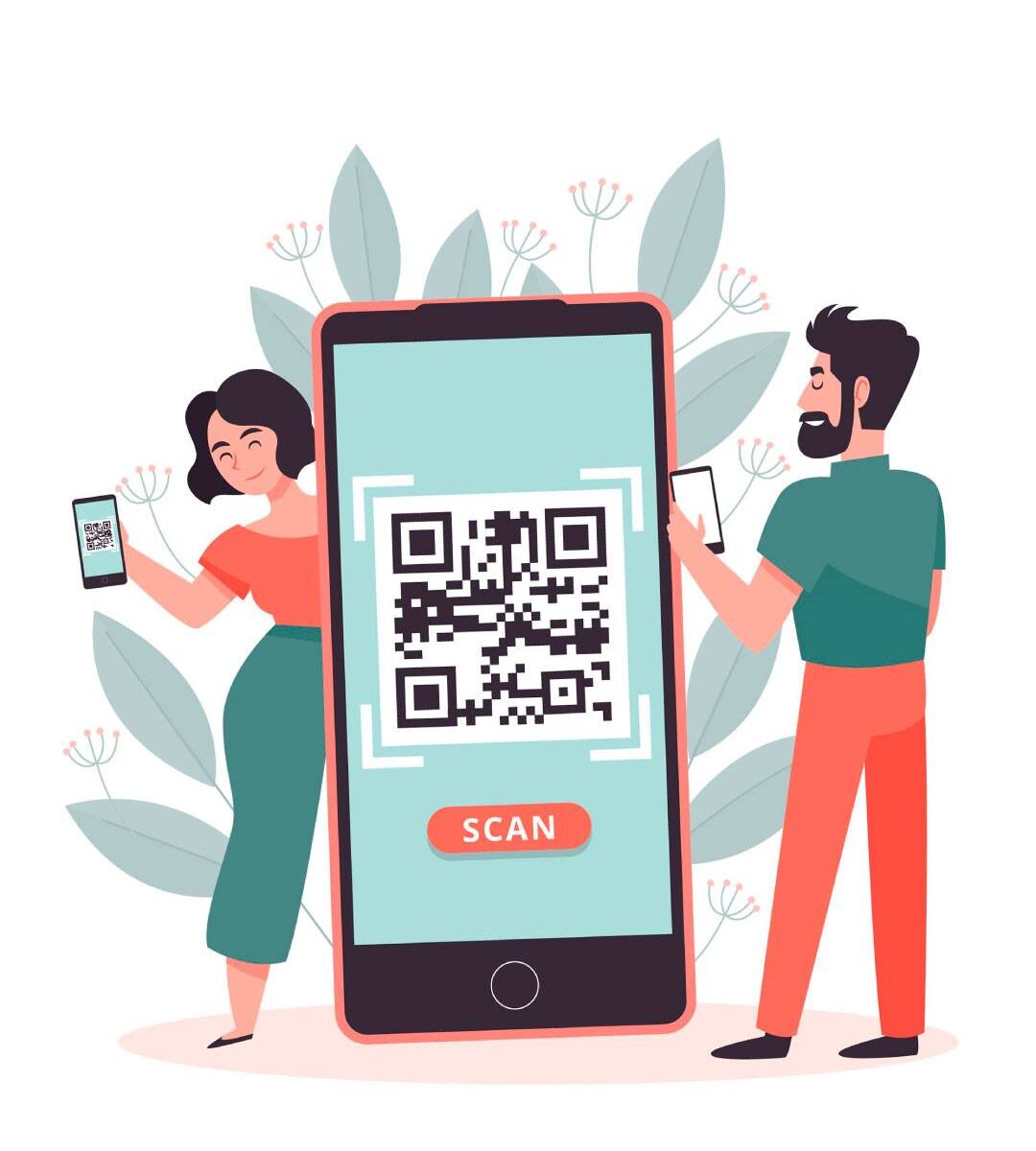Post-pandemic, the way of transactions has changed a lot. Earlier cash was a dominating factor which is now no more due to cashless transaction facilities. Small vendors to big businesses are having facilities to accept other than cash transactions, and even people are more inclined towards cashless transactions for even smaller purchases.
To facilitate cashless transactions, the QR code has an important role to play. Before going ahead with what is new going on with the QR code, first let’s know what the QR code is and when it was invented.
QR code means a Quick Response Code is a two-dimensional version of a barcode, typically made of black and white pixel patterns. It was invented in 1994 by Japanese company Denso Wave for labeling automobile parts. The barcodes hold information horizontally; the QR code does so both horizontally and vertically. Because of this feature QR code holds over a hundred times more information than Barcode.
Due to the growth in QR code adoption, making the payment is now easier, faster, and more convenient. Even it is more secure. The importance of QR codes is taking a storm as India is embracing digital payments. These QR code payment gateway providers will play a crucial role in the future of payment in India among consumers or merchants.
Many fintech companies in the market provide a QR base is BharatPe, Paytm, ScanPay, Google Pay, DigiPe, PhonePe, etc. If we see global players, they are Ensygnia, and Yoyo Wallet.
According to the latest report, now major banks are involved in launching their own QR codes at merchant establishments. The ICICI bank has taken the lead by introducing its merchant-oriented InstaBiz app and now other banks like HDFC Bank and Axis Bank are also involved in the QR code battle.
It is an acquisition drive for all leading banks to onboard merchants who might prefer a QR code to a point-of-sale (POS) terminal.
The report further says on QR code battle that ICICI Bank has 1.5 million active businesses using its merchant-facing payment platform, with year-on-year growth in throughput of over 70%, Whereas HDFC Bank’s SamrtHub Vyapar app has surpassed one million downloads. However, Axis Bank is working on creating a mobile app for merchants. They are even building their sound box.
The scenario earlier was very different when it comes to dominating the QR code market. Fintech majors like Paytm and PhonePe dominate this QR market and use banks in the bank to settle the transaction. However, on the front end, they use their own stickers and apps. In this way, these brands have gained the trust of customers and opened up lending opportunities for them.
Till this time, banks have kept quiet when fintech like Paytm, PhonePe, and BharatPe deployed their QR codes at merchant outlets while having merchant’s current accounts with banks. But slowly, the fintech grabbed an opportunity by offering credit to these merchants which was a jerk to banks as they think that these fintechs are taking their customers away from accessing credit from them. They are now all set to compete with their fintech rivals to keep these merchants within their fold.
Over 1,22,200 new-to-bank merchants were onboarded on the InstaBiz app of ICICI as of 31st March 2023. Merchants can digitally manage all their banking and collection transactions with features like voice notification of QR transactions, a dashboard, and instant settlement of funds through this app by ICICI Bank.
Other banks are collaborating with fintech companies and technology service providers to handle their applications and QR codes. The recent report states that Axis Bank has been working on BharatQR code terminals and sound box. Axis Bank believes that the combination of QR codes and sound box will provide notable benefits to their merchants. Even the Axis Bank is on its way to developing an application targeted towards merchants.
Banks are now aiming to regain their position in consumer payments that they had previously handled to fintech companies. Earlier when these fintech companies were unleashing their apps, banks kept hoping that their hardware point of sales would retain them in the market among their loyal merchants. However, their hope was jolted down due to smart-phone based apps and payment gateway surpassing card payments over time.
Fintech companies like BharatPe and Paytm expanded their domain and started lending businesses, using their increasing network of QR codes. Paytm has disbursed Rs. 2,313 crore in the January – March quarter. Paytm has a network of 68 lakh active merchants on its platform.
However, it is uncertain to know whether merchants, those who are using Paytm or PhonePe, switch over to their bank’s QR code or not. Banks are confident that they will win over these merchants, but they need to focus on the user interface and make it easier for businesses to access it. What will happen next in this QR battle is unpredictable whether banks will create a dent in the merchant base of these payment apps or they become just another QR code among many in the QR world.
It may be possible that customers and merchants may prefer using bank QR codes due to trust in financial institutions more than fintech companies. The Worldline report has stated that the number of transactions through QR codes alone increased by 53% in 2022 compared to the previous year.
As per the ACI Worldwide report, India will become a global leader in mobile payments, with a growth rate of 20.2% in digital transactions between 2020-2025. This report further states that QR code payments are expected to grow significantly over the next few years, with a CAGR of 26.8% from 2020-2025. QR-based transactions are projected to be $125 billion in 2026.








